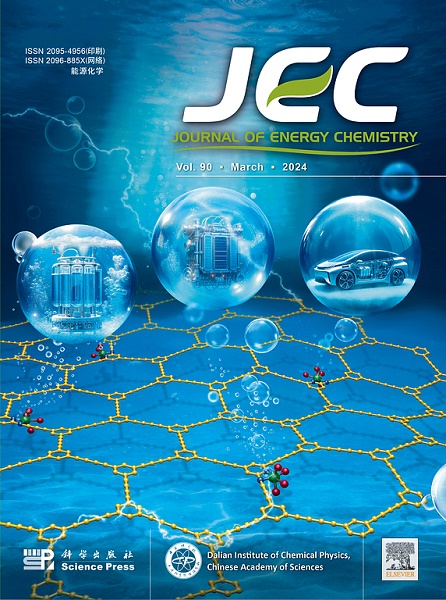Artificial intelligence high-throughput prediction building dataset to enhance the interpretability of hybrid halide perovskite bandgap
IF 13.1
1区 化学
Q1 Energy
引用次数: 0
Abstract
The bandgap is a key parameter for understanding and designing hybrid perovskite material properties, as well as developing photovoltaic devices. Traditional bandgap calculation methods like ultraviolet-visible spectroscopy and first-principles calculations are time- and power-consuming, not to mention capturing bandgap change mechanisms for hybrid perovskite materials across a wide range of unknown space. In the present work, an artificial intelligence ensemble comprising two classifiers (with F1 scores of 0.9125 and 0.925) and a regressor (with mean squared error of 0.0014 eV) is constructed to achieve high-precision prediction of the bandgap. The bandgap perovskite dataset is established through high-throughput prediction of bandgaps by the ensemble. Based on the self-built dataset, partial dependence analysis (PDA) is developed to interpret the bandgap influential mechanism. Meanwhile, an interpretable mathematical model with an R2 of 0.8417 is generated using the genetic programming symbolic regression (GPSR) technique. The constructed PDA maps agree well with the Shapley Additive exPlanations, the GPSR model, and experiment verification. Through PDA, we reveal the boundary effect, the bowing effect, and their evolution trends with key descriptors.

人工智能高通量预测建立数据集以提高混合卤化物钙钛矿带隙的可解释性
带隙是理解和设计混合钙钛矿材料性能以及开发光伏器件的关键参数。传统的带隙计算方法,如紫外-可见光谱学和第一线原理计算,耗时耗力,更不用说捕获混合钙钛矿材料在大范围未知空间中的带隙变化机制了。本文构建了一个由两个分类器(F1分数分别为0.9125和0.925)和一个回归器(均方误差为0.0014 eV)组成的人工智能集成,实现了对带隙的高精度预测。通过集成对带隙的高通量预测,建立了带隙钙钛矿数据集。在自建数据集的基础上,建立了部分相关分析(PDA)来解释带隙的影响机理。同时,利用遗传规划符号回归(GPSR)技术,生成了R2为0.8417的可解释数学模型。所构建的PDA图与Shapley加性解释、GPSR模型和实验验证相吻合。利用关键描述符揭示了边界效应、弯曲效应及其演化趋势。
本文章由计算机程序翻译,如有差异,请以英文原文为准。
求助全文
约1分钟内获得全文
求助全文
来源期刊

Journal of Energy Chemistry
CHEMISTRY, APPLIED-CHEMISTRY, PHYSICAL
CiteScore
19.10
自引率
8.40%
发文量
3631
审稿时长
15 days
期刊介绍:
The Journal of Energy Chemistry, the official publication of Science Press and the Dalian Institute of Chemical Physics, Chinese Academy of Sciences, serves as a platform for reporting creative research and innovative applications in energy chemistry. It mainly reports on creative researches and innovative applications of chemical conversions of fossil energy, carbon dioxide, electrochemical energy and hydrogen energy, as well as the conversions of biomass and solar energy related with chemical issues to promote academic exchanges in the field of energy chemistry and to accelerate the exploration, research and development of energy science and technologies.
This journal focuses on original research papers covering various topics within energy chemistry worldwide, including:
Optimized utilization of fossil energy
Hydrogen energy
Conversion and storage of electrochemical energy
Capture, storage, and chemical conversion of carbon dioxide
Materials and nanotechnologies for energy conversion and storage
Chemistry in biomass conversion
Chemistry in the utilization of solar energy
 求助内容:
求助内容: 应助结果提醒方式:
应助结果提醒方式:


